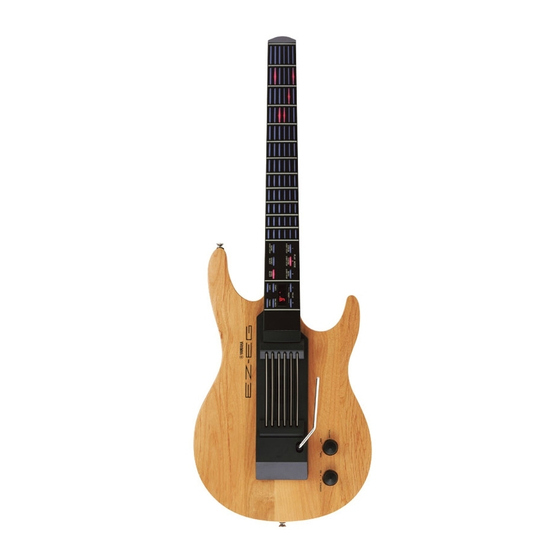Yamaha EZ-EG Manual de servicio - Página 18
Navegue en línea o descargue pdf Manual de servicio para Teclado electrónico Yamaha EZ-EG. Yamaha EZ-EG 34 páginas. Song chord chart
También para Yamaha EZ-EG: Manual del usuario (2 páginas), Manual abreviado (2 páginas), Manual complementario (3 páginas)

EZ-EG
<TABLE1>
1
DEMO
2
SOUND
10
TUNING
11
–
13
25
INSPECTION
(Preparation) PA-D09 (AC adaptor) is used. Set the [MASTER VOLUME] to maximum.
Jigs: Oscilloscope, voltmeter
Turn on the [POWER ON/STANDBY] switch.
(1) Check the speaker wires.
Select SOUND No. 5 and then generate sound C3 (6th string, 8th fret). Check that there is no static and no other abnormalities with the sound.
(2) MASTER VOLUME check.
Operate the [MASTER VOLUME] from its highest setting to its lowest setting. Check that there is no static and that the operation can
be performed smoothly.
(3) Check the sound source.
While pressing the [SOUND] button, use the [+] and [-] buttons to select the tones from No. 1 to No.5. Then at each tone, generate a
sound for each string. Check that the tone changes for each No. and that there are no other abnormalities.
(4) Pop noise check.
Connect an oscilloscope to the [PHONES/OUTPUT] jack and then turn the [POWER ON/STANDBY] switch on and off. Check that
the pop noise is less than 1.0 Vp-p.
(5) Battery operation check.
Insert a battery into the battery case. Then unplug the AC adapter from the DC-IN jack. Check that the unit performs normally by battery.
(6) Battery charger check.
Plug the AC adapter into the DC-IN jack. Then measure the voltage of the battery terminal. Check that the main unit operates normally
and that there is no voltage at the battery terminal.
(7) Static check.
Select Sound No. 5 and play all strings (with the [MASTER VOLUME] set to maximum and all other switches at their default
settings). Check that there is no static.
(8) Check the levelness of the neck.
Place the instrument on a level surface and check for neck deformation. Make sure there is no obvious next deformation.
(9) Check for foreign objects inside the main body.
With the power on, lift the unit up and then shake it up and down and from side to side. Check that the unit is clean and operating
properly and that there is no foreign material inside the unit or the LED.
(10) Visual inspection of the main body.
Visually inspect the condition of the entire unit including areas such as the neck switch section and the space between the fingerboard
and the upper case.
Check that there are no scratches and that the unit is clean. Also check that the tops of the switches are aligned and that none of the
switches is tilted or raised up. There should also be less than 0.5 mm of space between the fingerboard and the upper case.
(11) Setting to factory settings.
Momentarily turn off the power supply. Then, while holding down E3 (6th string, 12th fret), turn the [POWER ON/STANDBY]
switch on again.
Turn off the power supply to complete the inspection.
18
3
SONG
4
STRUM
1st fret of
12
+
13
1st string
14
5
CHORD
6
BOTH
2nd fret of
12th fret of
14
24
1st string
1st string
24
4
5
6 11 12
84
1
2
3 9 10
7
TEMPO
8
BALANCE
1st fret of
12th fret of
25
84
2nd string
6th string
7
8
9
CAPO
